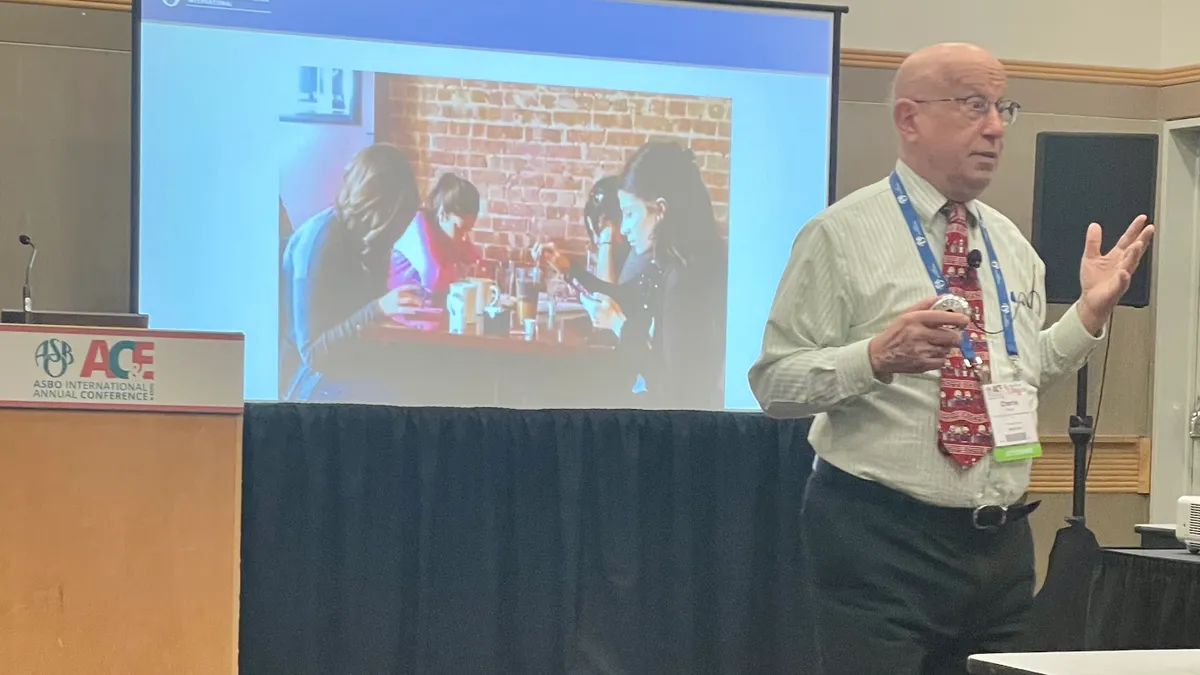In a time where technology is integrated in the everyday life of students and teachers, Charles Russo, a research professor of law at the University of Dayton in Ohio, shared best practices to consider when crafting district policies on the use of technology in the classroom.
During a Sept. 16 session at the Association of School Business Officials International’s Annual Conference & Expo in Portland, Oregon, Russo, also director of the Ph.D. program in educational leadership at the University of Dayton, specifically addressed two types of technology policies — acceptable use of school-issued devices and student cellphones.
Acceptable use policies should restrict school-issued computer use to only academic, instructional or administrative purposes, and students, parents and teachers should all sign agreements at the start of each school year, he said. However, student cellphone policies that explain when students can use cellphones in school should be considered on a district-by-district basis.
Here are Russo’s tips for districts implementing acceptable use or student cellphone policies.
Is there community support?
For student cellphone policies, school business officials and other district leaders should consider whether there’s local support to limit or ban the use of cellphones in school, Russo said.
If a school community is likely to support such a policy, he said a committee of key stakeholders should be created to craft guidelines including existing statutes and case law. The committee should include school board members, teachers, school board lawyers, administrators, parents and students.
District officials should also revisit both acceptable use and technology policies every year or two because laws can change, Russo said.
Be specific about sanctions
When considering guidance for both student cellphones and acceptable use of school-issued devices, Russo said it’s important to be specific in district policies about the consequences for violating these rules.
Sometimes there are offenses that warrant dismissal of students or staff, but there should often be several levels of sanctions, he said. Responses to technology or student cellphone use violations can range from loss of technology privileges to suspension or expulsion.
“Think it through: What works for your school system?” Russo asked conference attendees.
More specifically, cellphone policies should specify when phones can be taken away, for how long and who is permitted to do so. Overall, it should be clarified in the policy when students can and can’t use cellphones in school.
Be careful when using the words “may” and “shall” when crafting acceptable use policies, Russo said.
“‘May’ means you have the discretion, but if a teacher ‘shall’ be punished, then you have to punish everybody, every time,” Russo said.
Context of safety, age
Acceptable use and cellphone policies should also consider the context of safety and age, Russo said. And acceptable use policies should warn against visiting inappropriate sites.
For acceptable use policies, consider what is age appropriate for children of certain ages to search on school devices. Additionally, Russo said these policies should have different provisions based on a student’s age.
Cellphone policies should also think twice about banning student use amid the context of school shootings like in Uvalde, Texas, four months ago, he said. Policies should consider cellphones are often given to students as a matter of personal safety, particularly when traveling to and from school.
As district leaders consider safety provisions for student cellphone policies, Russo asked: “If there’s an emergency and a kid has to call somebody, what are they going to do?”










